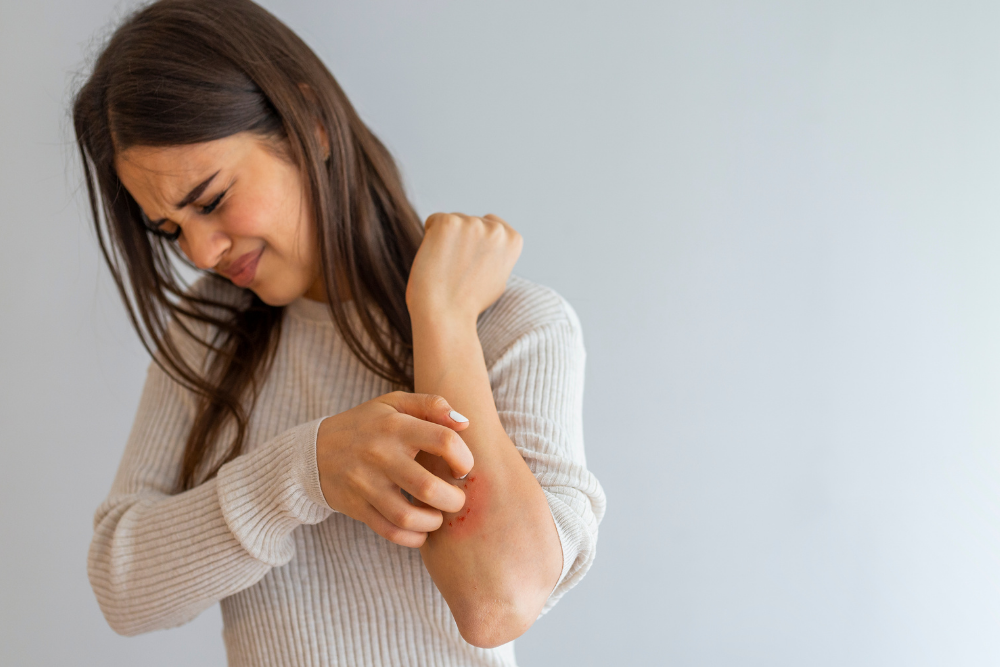
This article discusses the signs, symptoms and treatment options for celiac disease rash, which is also known as dermatitis herpetiformis. This is not a substitute for medical advice from your doctor. Please talk to your doctor if you suspect you have DH. Please read my disclosures.
The celiac disease rash, also known as a gluten intolerance rash or celiac of the skin, is a rare, chronic and sometimes painful autoimmune condition that causes itchy blisters on the skin.
The technical name for celiac disease rash is dermatitis herpetiformis (DH), and it’s a skin manifestation of celiac disease.
One in 10,000 people have dermatitis herpetiformis while 1 in 30,000 have celiac disease. DH is most commonly diagnosed between the ages of 30-40, although it affects people of all ages. The only exception is that DH is not commonly found in children.
People with celiac disease don’t necessarily develop DH. In fact, less than 20 percent of people with celiac disease go on to develop dermatitis herpetiformis.
That said, about 20 percent of people with DH will develop gastrointestinal symptoms congruent with classic celiac symptoms, and more than 60 percent of people with celiac rash experience damage to their small intestines consistent with the damage seen in celiac disease patients.
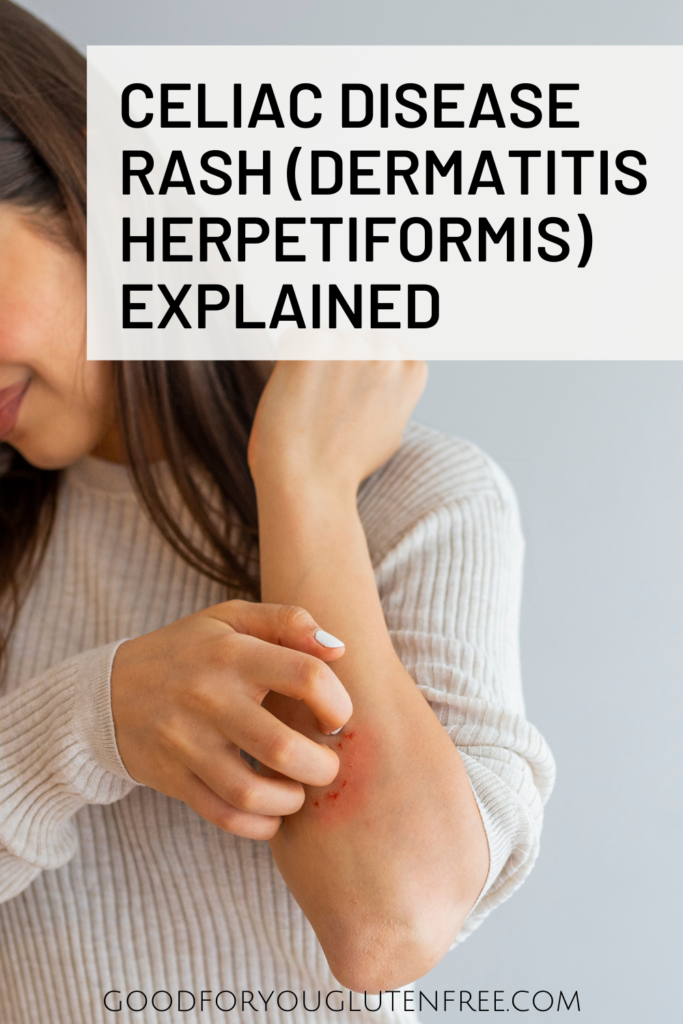
Symptoms of Celiac Rash
Most people with celiac rash will notice red, itchy bumps or lesions on their skin that seem to never go away or that flare up from time to time.
The rash typically appears on one’s elbows, knees, buttocks, lower back, and scalp, but also it can also be found on one’s neck, face, legs and other parts of their body.
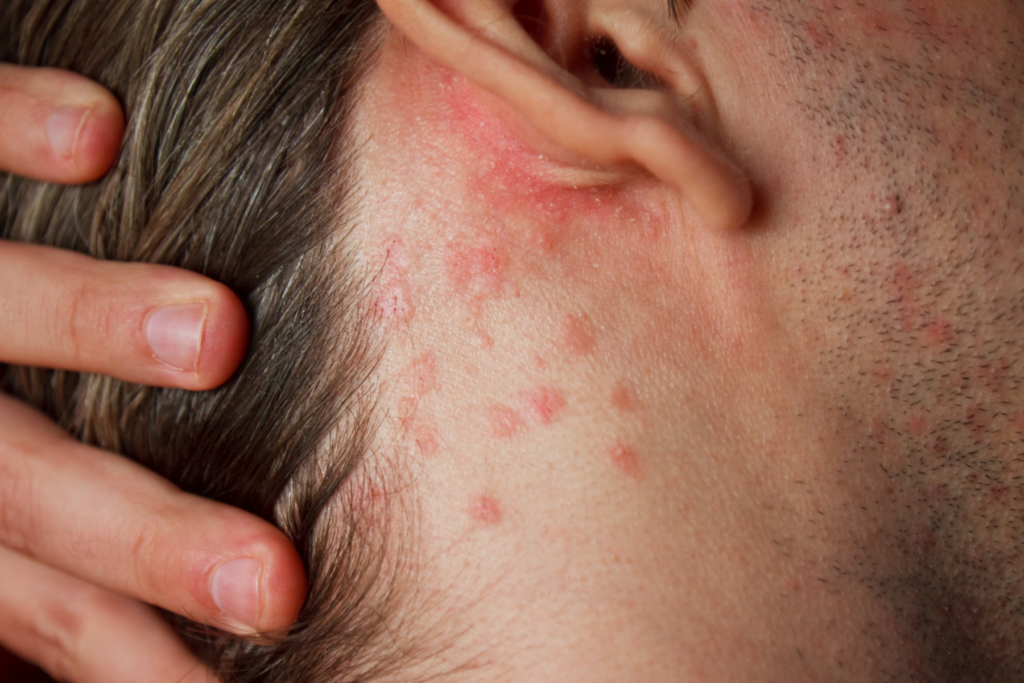
One interesting thing about DH is that the rash is typically symmetrical. This means if the celiac disease rash shows on the left elbow, it’s likely to show on the right elbow too.
Patients with DH find that their rash will often disappear or turn on and off from time to time. Some also find that DH leaves behind a brown mark or shadow on the skin where it was present.
If you have any of the following symptoms, talk to your doctor about getting tested for DH:
- Itchy bumps and blisters, particularly on the elbows, knees, back and/or buttocks.
- Symmetrical rashes of the same size and shape on both sides of your body; the rash looks similar to eczema.
- Persistent and chronic bloating, cramping, and/or diarrhea or constipation.
Diagnosis of Celiac Rash
Dermatitis herpetiformis is typically diagnosed by a primary care doctor or dermatologist. A doctor will biopsy a small piece of skin and will look for the presence of Immunoglobulin (IgA) antibodies within the dermis. (The dermis is the thickest layer of skin and is found between the epidermis and subcutaneous layers.) Traces of IgA antibodies are not normally found in skin tissue.
Some doctors also perform an intestinal biopsy of the small intestine, looking for damage consistent with celiac disease.
Some people who are diagnosed with DH do not have a positive celiac disease blood test, however, the diagnosis is just as serious as celiac disease and the treatment is the same for DH as it is for celiac disease.
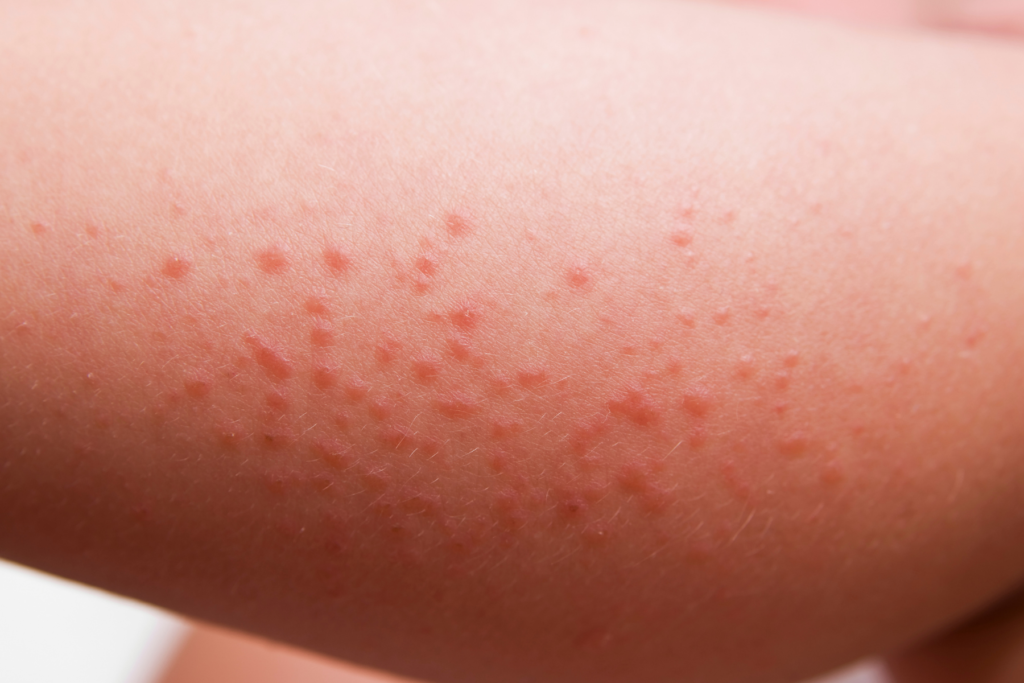
Dermatitis Herpetiformis Treatment
A celiac disease rash is typically treated in two ways. One, it’s treated via a strict gluten-free diet, and two, it’s treated with the antibiotic dapsone.
Unfortunately, some research suggests it may take up to six months for a DH patient’s itchy skin symptoms to improve even with strict adherence to a gluten-free diet and antibiotic treatments.
Chances are, once you have DH, you have to deal with it for life, although the gluten-free diet will encourage remission or at least milder symptoms and less flare ups. In fact, experts say the gluten-free diet can eliminate the need for future medications and medical interventions.
What Causes Celiac Disease Skin Rash?
The exact cause of the celiac disease skin rash is unknown, but researchers know that the blisters are triggered by the presence of gluten in the gut and that there is a strong link between DH and celiac disease.
People with the celiac skin rash experience damage to their intestines just as those with celiac disease do, however, only some DH patients experience classical celiac disease symptoms, such as bloating, gas, diarrhea, etc.
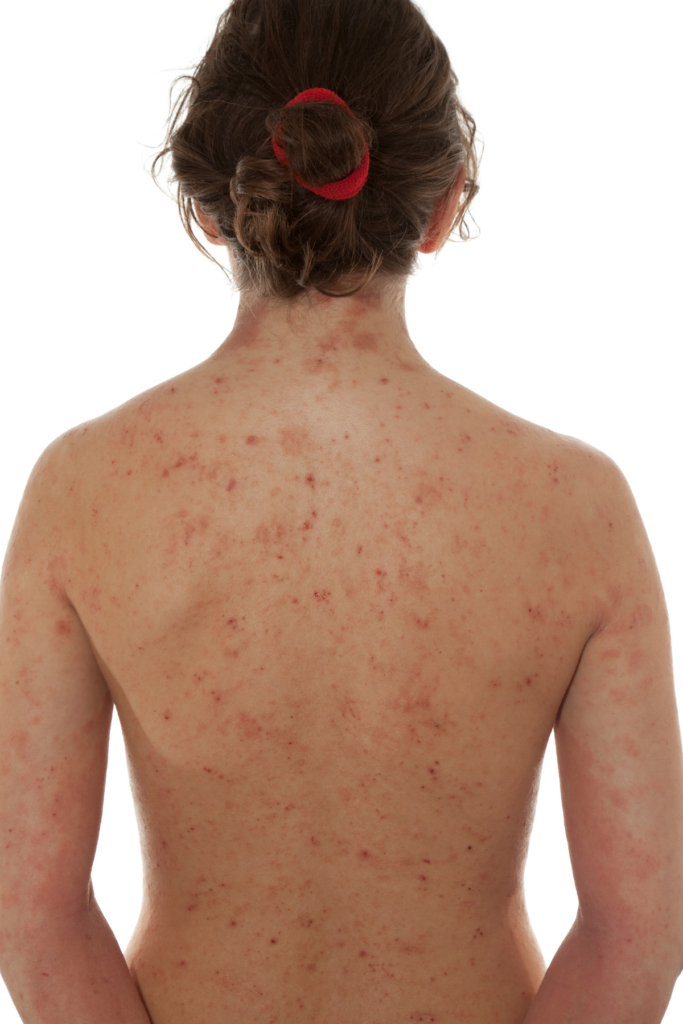
Potential Complications
Most DH patients are highly motivated to manage their disorder, as the celiac disease rash is itchy and painful, not to mention disfiguring to the body during flare ups.
If the disorder isn’t properly managed through a gluten-free diet, complications may include an increased risk of intestinal and other cancers, autoimmune thyroid disease, and worsening skin symptoms.
If you suspect you have DH, or any skin disorder, talk with your doctor immediately.
Source: National Organization for Rare Diseases
Additional Articles
Can Celiac Disease Cause Hair Loss?
Hi , my prayers for each of you with this condition♡..I take it one day at a time , ive seen all doctors available with no change..my body looks like a road map, but somehow prayer does help and Im just living with it , ive learned to be stronger and kinder with others that like me could be having issues i cannot see.
It could be. Airborne gluten could absolutely affect him. https://www.goodforyouglutenfree.com/airborne-gluten/
since my husbands diagnosis of DH and gluten intolerance over a year ago. We have been entirely gluten free. there is not one grain of wheat in the house. He has been a lot better BUT he still gets the rash, just not as bad. Last week he broke out in the worst rash EVER! The only thing we can figure is he might have to quit going into the chicken yard. He is afraid that breathing gluten can be the problem. Do you think that breathing gluten can cause a reaction?
Having lived a life of misdiagnosis. Malnutrition. Rashes and itching. Emaciation. I was told for 30 years that I had IBS. Finally at the age of 55 some random dr suggested I get tested for celiac. I didn’t even know what it was. My life is better. I have a normal weight. But issues persist with rashes and itches and bellyaches. etc. It’s truly a life sentence. I am completely gluten free. My own cooking dishes etc but gluten sneaks in. Never eat in restaurants. ever.
Having DH is hell some of these articles are designed to only give you enough information to sell the product that you see if you take up the 2 years or more for your small intestines to heal if you never consume gluten again if by chance you can go a year and a half and never get gluten in your system and then you get a small amount of gluten by cross contamination the process starts all over if you going to your kitchen and look around everything in there has traces of gluten in order not to get cross-contamination in your own house you have to go out and buy everything pots pans glasses spoons forks microwave toaster and mark them gluten free when you shop for food do not buy any pre-processed foods do not trust anything that says gluten free
Thank you for the article. I continue to have break outs and flare ups even with a very strict gluten free diet. I am never totally clear of the rash. Reading the article on DH reminds me there are others out there battling the same thing.
Thanks for sharing this article. It is wonderful that my DH is controlled by a GF diet and requires no medication.
Becky Davenport